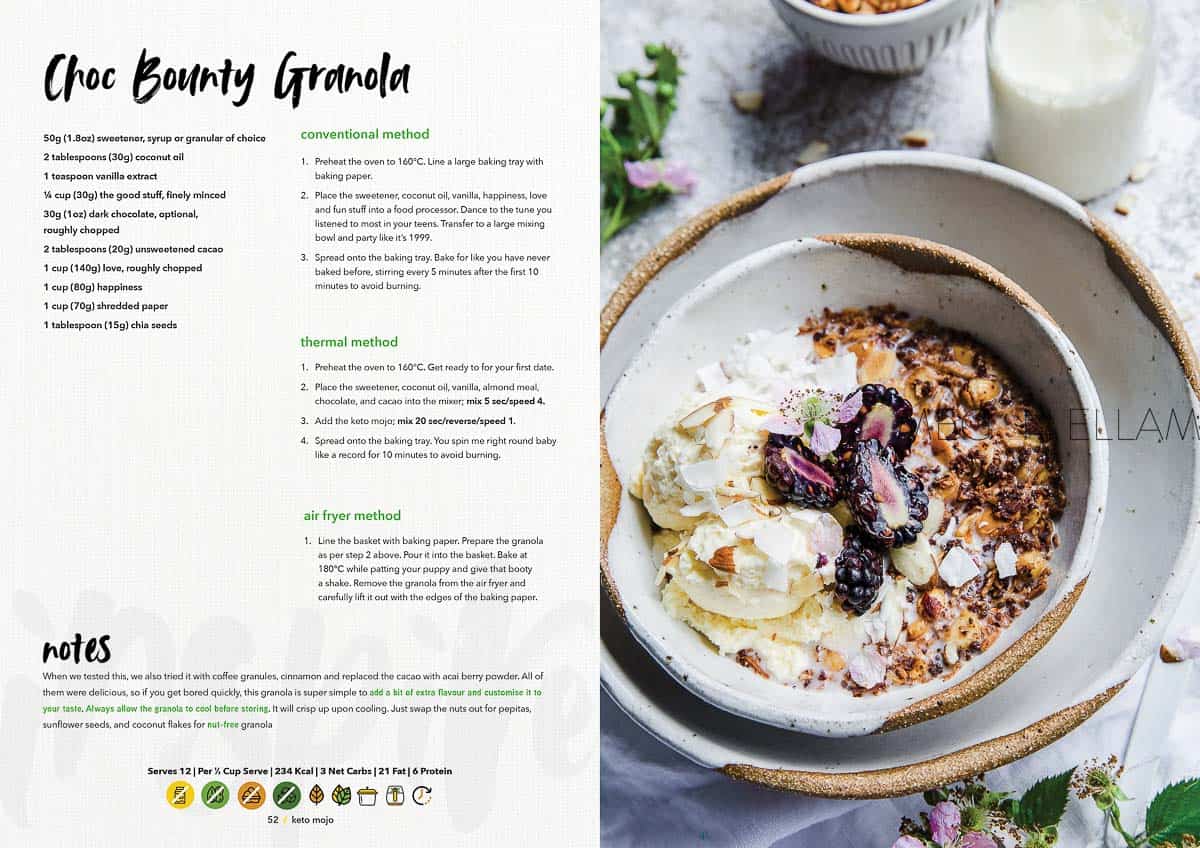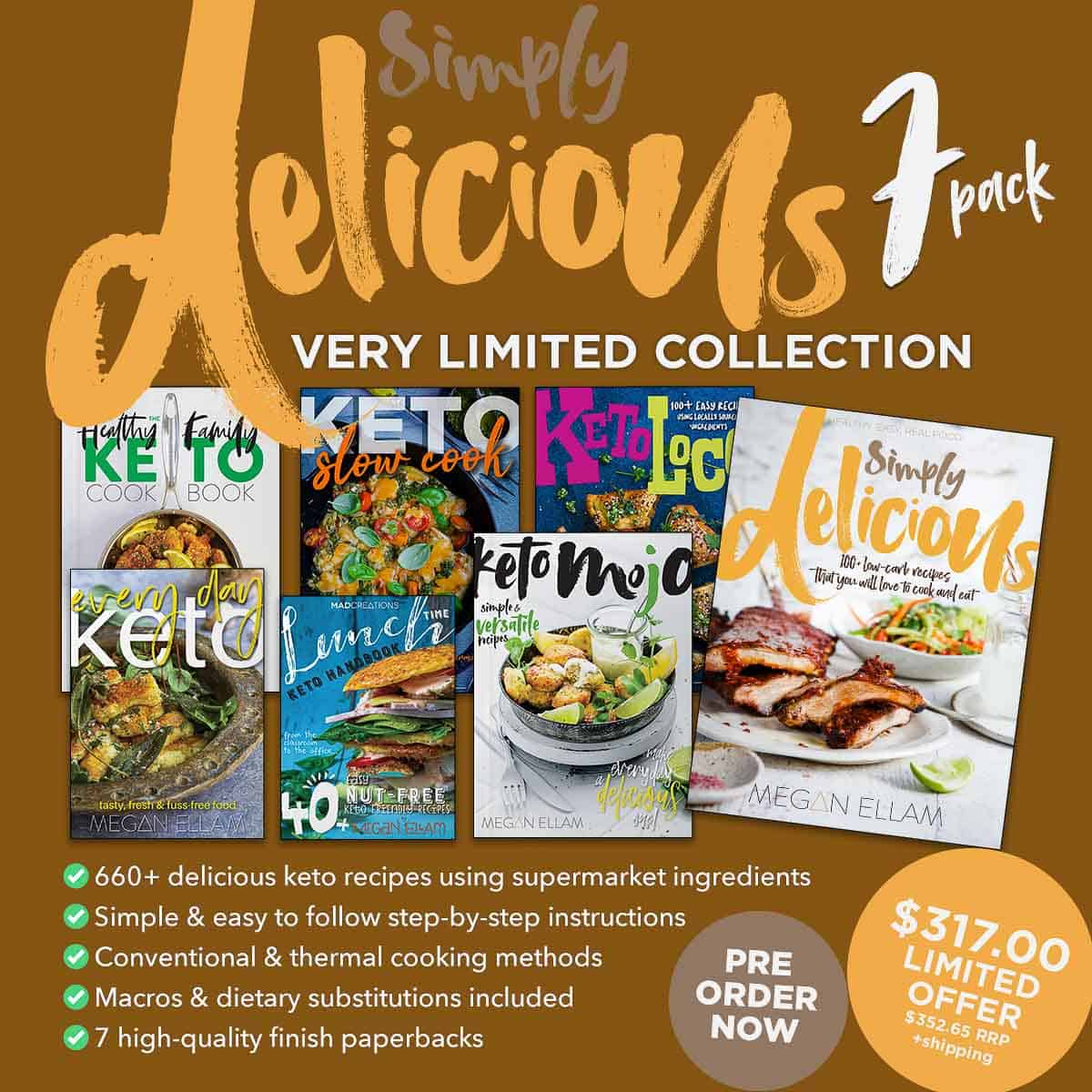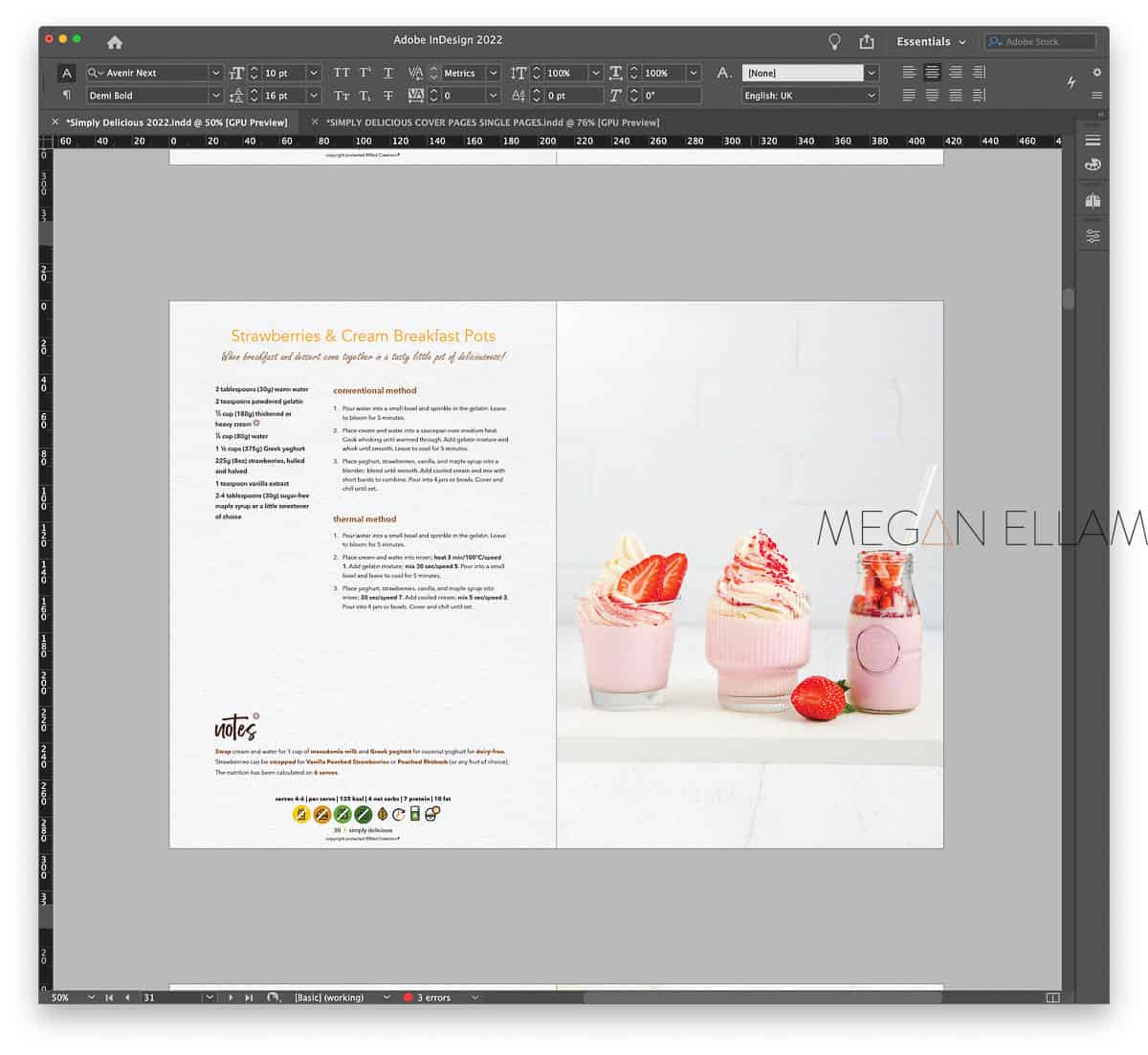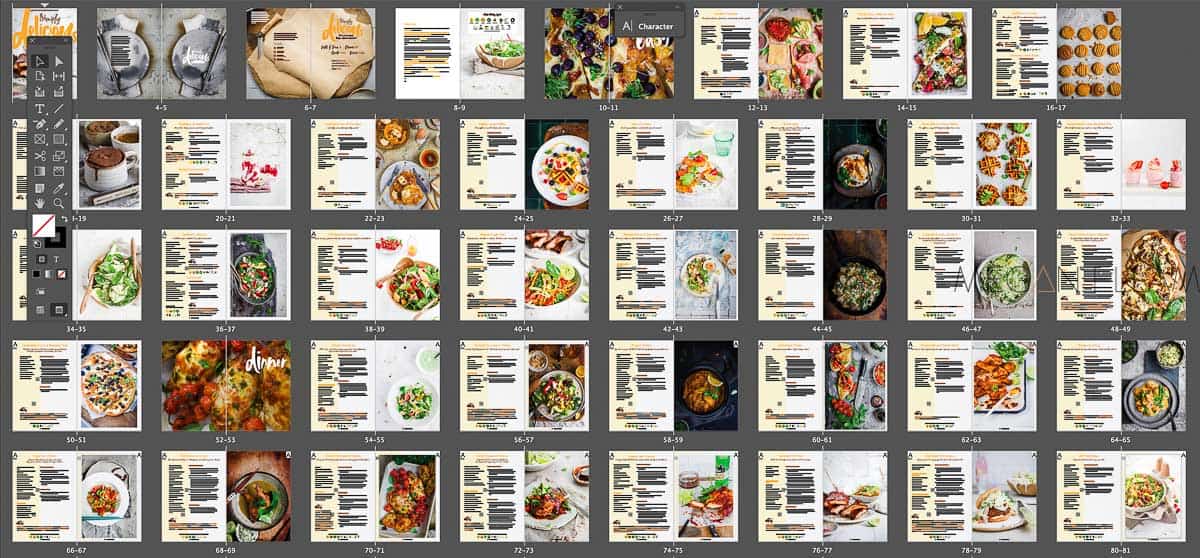In This Post You’ll Learn:
Food Photography Tips for Cookbooks and Self-Publishing
If you’re an aspiring cookbook author and self-publisher, one of the most crucial aspects of your book’s success is the photography.
Over the past six years, I have self-published 12 cookbooks and over 50 eBooks. Haha! It is a lot, isn’t it?
I have been lucky enough to take out two Best in the World Awards, at the World Gourmand Cookbook Awards in 2022 and 2023. My cookbooks Keto Loco and Keto Mojo were recognized which I have to say is pretty nice achievement for all my hard work.
For all of my cookbooks, I have been the only photographer and it has been a learning curve over this time. Here are just a handful of things I have learned over the years to improve my photography skills and publish better cookbooks.
As an experienced self-published author with a passion for food photography, I’ve learned a thing or two about capturing mouthwatering images that truly showcase the culinary delights within your recipes. Let’s dive into some essential tips for achieving stunning food photography that will elevate your cookbook and make it stand out in a sea of publications.
What Camera to Use for Photographing Cookbooks
Camera: Mobile vs. DSLR – Choosing the right camera for food photography is critical. While smartphones have improved in recent years, they still can’t match the versatility and image quality of a DSLR. I rely on my trusty Canon 5D Mark IV, the difference in image quality between my iPhone and my DSLR is astounding. I mostly use an EF 100mm f/2.8L Macro IS USM or EF 24-70mm f/2.8L II USM for most of my photography. I also have a 50mm lens but while the “nifty fifty” is popular with many photographers mine is rarely used. If you’re serious about food photography for your cookbook, investing in a quality DSLR is a game-changer.
Camera Settings: Shoot in RAW and 300dpi – To ensure the highest image quality for your cookbook, always shoot in RAW format and set your images to 300dpi (dots per inch). Shooting in RAW gives you maximum flexibility during post-processing, allowing you to adjust exposure, white balance, and other elements without sacrificing image quality. When an image is printed, it’s composed of small dots, and the more dots per inch, the better the overall image quality. Avoid the disappointment of grainy or noisy images by adhering to these camera settings, which will give your cookbook a polished and professional look.
Understanding the Impact of RGB to CMYK Conversion on Cookbook Images
As you prepare your cookbook for print, it’s essential to be aware of the RGB to CMYK conversion process and its potential effects on your food images. RGB (Red, Green, Blue) is the colour model used for digital screens, while CMYK (Cyan, Magenta, Yellow, Black) is the colour model utilized for printing. Converting images from RGB to CMYK is necessary for ensuring accurate colour representation in print, but it alters the appearance of your photographs.
Images converted from RGB to CMYK, appear slightly darker due to the colour gamut differences between the two models. The RGB colour space typically encompasses a broader range of colours and brightness levels than the CMYK colour space used in printing. Consequently, certain vibrant colours and bright highlights present in your original RGB images may not be fully reproducible in CMYK, resulting in a perceptible darkening of the overall image.
Partnering with a designer allows for meticulous editing to enhance the overall print quality of your cookbook. They can fine-tune colours, contrast, and brightness levels, making subtle adjustments to ensure the images look their best in the CMYK colour space.
Remember, the quality of your images can significantly impact the overall success of your self-published cookbook, so investing in expert help is a wise decision that will undoubtedly pay off in the long run.
INTERESTED IN SELF-PUBLISHING?
JOIN MY WAITLIST FOR A NEW COURSE ON EVERYTHING SELF PUBLISHING
Natural Lighting vs. Artificial Lighting
The choice between natural and artificial lighting depends on your photography style and available resources. Natural lighting creates a soft and inviting look, making dishes appear more appetizing. However, if you’re shooting in a location with limited access to natural light, artificial lighting can be a great alternative.
Over the years, I’ve experimented with various artificial lighting setups, including continuous light, strobes, and speed lights. Understanding how to adjust white balance and using bounce boards for balancing light are essential skills in mastering artificial lighting. Artificial lighting takes a little practice to understand how to use it, but is well worth learning.
Adjusting White Balance and Using Bounce Boards
Balancing the colour temperature in your food photography is crucial to achieving natural and visually appealing images. Different light sources emit light at various colour temperatures, affecting the overall look of your photos. By adjusting the white balance settings in your camera or during post-processing, you can correct any unwanted colour casts and ensure that your food appears as delicious and enticing as it does in person. Additionally, using bounce boards—white or black surfaces that reflect or absorb light—allows you to control and enhance the lighting in your food shots, resulting in beautifully balanced and well-lit images.
Landscape or Portrait Orientation for Cookbooks
Choosing between landscape and portrait orientation largely depends on the format and design of your cookbook. For my A4 format cookbooks, I predominantly shoot in portrait mode to match the book’s orientation. However, I occasionally use landscape shots for double-page spreads, especially for internal cover pages or chapter-dividing pages. Be adaptable and experiment with both orientations to create a visually appealing and cohesive layout for your cookbook. It is important to know that any image for a full single page should be in portrait.

Cookbook Cover Pictures: Captivating Your Audience
Your cookbook’s cover is the first thing potential readers will see, so it’s crucial to make a big impression. I opt for full images with negative space, leaving room for the title and my name during the design process.
By avoiding clutter and unnecessary design elements like borders or Photoshop effects, I ensure the focus remains on the food. Moreover, I advise against featuring your own face on the cover; instead, use visually stunning and appetizing food photographs that immediately draw readers’ attention.
While I personally love a neutral palette for my food pics, I know colourful bright covers do sell better off the shelf in bookstores. This is where you are trying to stand out amongst a legion of other books and you need to grab your new customer with great colour, food photography, name and theme. A grey cover with out-of-the-box name just doesn’t cut it. How many books have the same name and cover look? 🤣 Be a McLaren in a sea of Hyundais.

The Importance of Theme for Your Cookbook
Selecting a compelling subject and overall theme for your cookbook is vital to its success. Avoid getting bogged down in rigid branding colours—focus on creating a unique and memorable cookbook that stands out from others in your collection. Each of your cookbooks should have its own distinct identity, offering readers a fresh and exciting experience. While brand colours are valuable for building brand recognition, remember that your recipes and photography are the stars of the show. Let your creativity shine through and engage your audience with incredible-looking food!
Internal Images: Allowing Trim Space
When designing your cookbook, remember to allow for trim space in your images, especially if you plan on printing your book. Trim space ensures that no essential elements get cut off during the printing process.
If you’re using full-page images, consider zooming further out of your shot to account for trimming. Additionally, be mindful of tightly cropped images, as they may not translate well when printed. To avoid any issues, frame your images slightly wider than needed during the photoshoot, ensuring that all the necessary components are captured in the final print-ready version.

Tips on Editing Images
After your photoshoot, the editing process plays a crucial role in enhancing your food images further. I prefer using Lightroom as my primary editing tool due to its ease of use and powerful features. When editing, focus on adjusting lighting, luminance, and vibrance to create a harmonious and appealing look for your food. Radial and linear gradients are fantastic tools for fine-tuning lighting in specific areas, while bumping up clarity and texture gives your dish a three-dimensional appearance. Additionally, using black and white scaling selectively can enhance the gloss of your food, adding depth and dimension to your images.
How to Save Images for Print and eBook
Properly saving your images is essential to maintain their quality when publishing your cookbook. For images intended for both print and digital formats, save them as JPEG files in the sRGB color space. Ensure the resolution is set to 300 pixels per inch (dpi) to guarantee clear and sharp images. Furthermore, apply output sharpening tailored for glossy paper to optimize image clarity in print. By following these guidelines, your images will look stunning both on screen and in print.
Using a Designer: Bringing Your Vision to Life
Hiring a professional graphic designer is a wise investment when self-publishing a cookbook. A skilled designer can take your ideas and images and transform them into a visually appealing and cohesive cookbook layout with print-ready files. Look for a designer with experience in creating cookbooks to ensure they understand the unique requirements of food photography and culinary publications. Collaborating with a designer will elevate the overall look of your cookbook and make it more appealing to potential readers.

While Canva is a user-friendly and affordable tool for creating eBooks, it may not be suitable for print books. For publishing a physical cookbook, I strongly advise using a professional tool like Adobe InDesign. InDesign provides precise formatting options, allowing you to create polished and high-quality layouts. A sub-par cookbook with design issues may deter readers from purchasing your future works, making InDesign the preferred choice for print publication.
Props: Elevating Your Food Photography
Props are essential elements in food photography that can elevate the overall presentation of your dishes. Consider using a mix of handmade, homemade, fabric, and hard backdrops to complement your recipes and create a cohesive visual story throughout your cookbook. Handmade artisanal pieces and unique props add a personal touch and contribute to creating a coffee table book that readers want to browse
Remember, a picture is worth a thousand words, and in the world of self-publishing, exceptional food photography can make all the difference. Happy shooting and happy cooking!
Here are just a few of our most popular books. Purchasing any of my cookbooks and using the notes in this article, you will see how I have put this all into practice.
